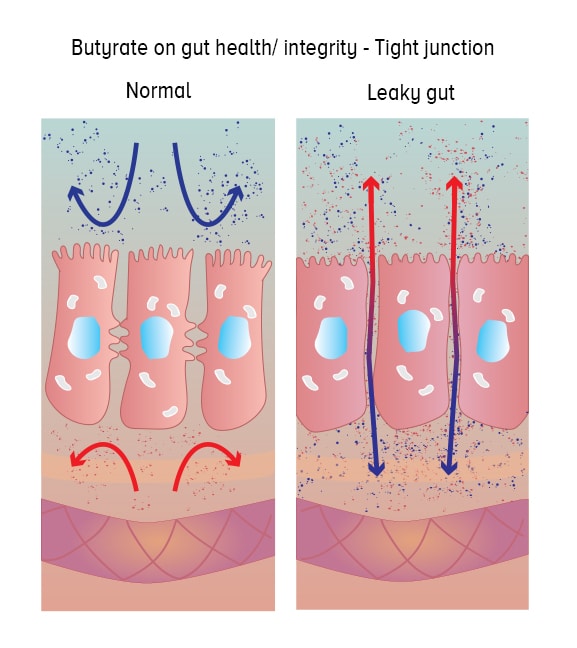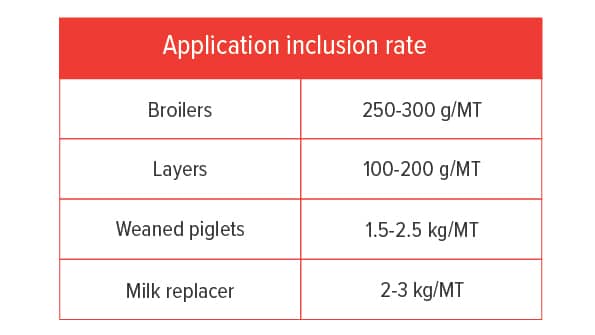Various antibiotic products in poultry production are gradually being banned around the world due to the adverse problems including the antibiotic residues and antibiotic resistance. Tributyrin was a potential alternative to antibiotics. The results of the present study indicated that tributyrin could improve the growth performance by modulating blood biochemical indices and the cecal microflora composition of yellow-feathered broilers. To the best of our knowledge, few studies investigated the effects of tributyrin on intestinal microbiota and its relationship with growth performance in broilers. This will provide a scientific basis for the application of tributyrin in animal husbandry in this post-antibiotic era.
Butyric acid is produced within the animal intestinal lumen by bacterial fermentation of undigested dietary carbohydrates and endogenous proteins. 90% of this butyric acid is metabolized by cecal epithelial cells or colonocytes to provide multiple beneficial effects on gut health.
However, free butyric acid has an offensive odour and is difficulty to handle in practice. In addition, free butyric acids has been shown to be largely absorbed in the upper gastro-intestinal tract, resulting in the majority not reaching the large intestine, where butyric acid would exert its major function.
Therefore, commercial sodium salt butyrate has been developed to ease the handling and prevent the release of butyric acid in the upper gastro-intestinal tract.

But tributyrin consists of butyric acid and mono-butyrin and in the upper gastro-intestinal tract, tributyrin is hydrolzed into butyric acid and α-mono-butyrin but in the hindgut, the major molecule will be α-monobutyrin which provides more energy, to boost muscle growth and to promote capillary development for better nutrients transportation.
There are a number of disorders associated with the gut health of chickens including:
- diarrhoea
- malabsorption syndrome
- coccidiosis
- necrotic enteritis
The addition of tributyrin has been widely used to combat gut disorders, and ultimately enhance chicken gut health.
In layer chicken hens, it is able to improve calcium absorption in particular in older laying hens and improve eggshell quality.
In piglets the weaning transition is a critical period due to severe stress resulting from shifting from liquid to solid feed, changing in environment, and mixing with new pen mates.
In a recent piglet trial we conducted in Rivalea, it is clearly shown that adding 2.5 kg Tributyrin /MT post weaning diets for 35 days improved body weight gain by 5% and feed conversion ratio by 3 points.

Tributyrin can also be used in milk as a replacer for whole milk and partially negates the negative effect that milk replacers have on rumen development.
Post time: May-25-2023





